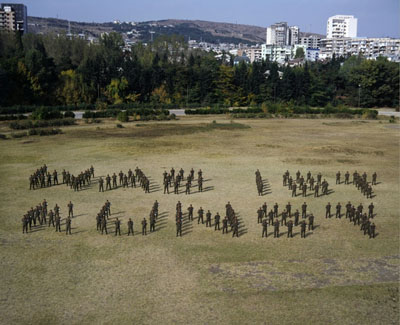
Was ist Kunst, Tbilisi 2007
© IRWIN
3rd Moscow Biennale of Contemporary Art - Against Exclusion
Marina Abramović » AES+F » AES+F » Victor Alimpiev » Lara Almarcegui » Ghada Amer » Blue Noses » Blue Noses » Botto & Bruno » Christoph Büchel » Marina Chernikova » Olga Chernysheva » Sheba Chhachhi » Ofri Cnaani » Thomas Joshua Cooper » XING Danwen » Eva Davidova » Stephen Dean » Wim Delvoye » Alexandra Dementieva » Braco Dimitrijevic » Anita Dube » Vladislav Efimov » Cyprien Gaillard » Gerda Steiner & Jörg Lenzlinger » Dmitry Gutov » Dmitry Gutov » Fiona Hall » Aspassio Haronitaki » Romuald Hazoumé » IRWIN » Alfredo Jaar » William Kentridge » Anastasia Khoroshilova » Kimsooja » Jiri Kovanda » Elena Kovylina » Anders Krisár » Oleg Kulik » Jean-Jaques Lebel » Brian McKee » Annette Messager » Boris Mikhailov » Andrei Monastyrski » Vik Muniz » Irina Nakhova » Deimantas Narkevicius » Orlan » Anatoly Osmolovsky » Anatoly Osmolovsky » Mike Parr » Pierre & Gilles » Julius Popp » Dimitri Prigov » Dimitri Prigov » Markus Raetz » Reynold Reynolds » Chiharu Shiota » Yinka Shonibare MBE » Roman Signer » Elisabeth Smolarz » Mladen Stilinovic » Wolfgang Tillmans » Tomaz Tomazin » Tunga (Antonio José de Barros Carvalho e Mello Mourao) » Spencer Tunick » Koen Vanmechelen » Carl Michael von Hausswolff » Thomas Wrede » Erwin Wurm » Zhang Xianyong » LEE Yongbaek » PENG Yu » SUN Yuan » Vadim Zakharov »
Exhibition: 25 Sep – 25 Oct 2009

Moscow Biennale
Bolshaya Yakimanka, 26
119180 Moscow
+7 095-2303634
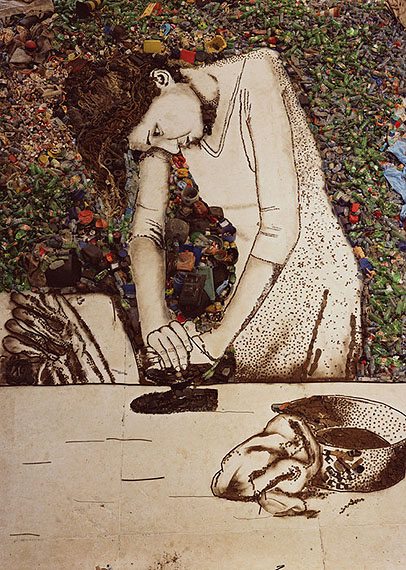
Woman Ironing (Isis), from the series "Pictures of Garbage", 2008
digital C-Print, 143 x 101,6 cm
@ Vik Muniz
The 3rd Moscow Biennal of Contemporary Art provides a mixed bag from today's international art scene. With some 80 artists, including Kapoor, Anatsui, Delvoye, Sun Yuan and Peng Yu, the audience is offered both re-worked pieces that have appeared in many of the latest international shows and established Russian artists, featuring sculptural and object-based projects that highlight the national taste for collectable art objects. Dmitry Tsvetkov's excessive installation of ironic taxidermies (bear, fox, and rabbit,) bigger than a life-size, each dressed in elaborate fur coats all led by a blind mouse, bring to mind a local version of Chapman Brothers' best-selling animalia. Placed in a gallery room along with artists like Koen Van-mechelen's live Cosmopolitan Chicken, and Celeste Boursier-Mougenot's stuffed sparrows From here to ear vue v.8, his installation adds to the zoo-like atmosphere. Whether such use of nature is a valid trend sparked by Damien Hirst's successes, or merely an attempt by the curator to initiate a new one, the hotch-potch layout of the gallery space feels confusing and incoherent. However, perhaps Jean-Hubert Martin, the curator of the Biennale, can't be faulted for the exhibition's leanings toward sculptural monumentality, as he knows Russia well, having pulled together the exhibitions "Paris-Moscow" (1979) and Ilya Kabakov's exhibition in 1985. Already having surveyed the beginning of con-ceptualism, Martin focuses on the second generation of Moscow conceptualists in the Biennal, such as Gutov, Brodsky, Chikov, present with their more sculptural/ painterly endeavors. Younger and less known artists offer yet another local trend: based in Kherson, Ukraine, Stas Volazlovsky and outsider-artist Alexander Lobanov present paintings that trade current political faces (Putin,) and urban and criminal folklore. The Biennial theme, "Against Exclusion," was devised to counter the cultural mainstream, but the exhibition achieves the opposite: it reinforces the household names with static materiality, especially with the scale of the works. Martin's selection gains its weight from an aura of its conspicuous venue — Garage, Center for Contemporary Art, backed up by the oligarch Roman Abramovic and chaperoned by his girlfriend. It isn't clear what brings the high-est number of visitors to this Biennial's prestigious venue, but it probably isn't the questions posed by the art. It seems that "Against Exclusion" left out politics, social subjects and new media. And if in his seminal 1979 exhibition "Magiciens de la terre" Martin challenged the establishment by showing art from excluded African countries, in Moscow the curator takes a comfortable stand. "We are probably ruled too much by old people," said Martin about the thirteen live-size wax figures, Old Persons Home, by Chinese artists Sun Yuan and Peng Yu. Despite the surfaces and scale of the works crowded inside the Garage, the exhibition feels ironically empty.
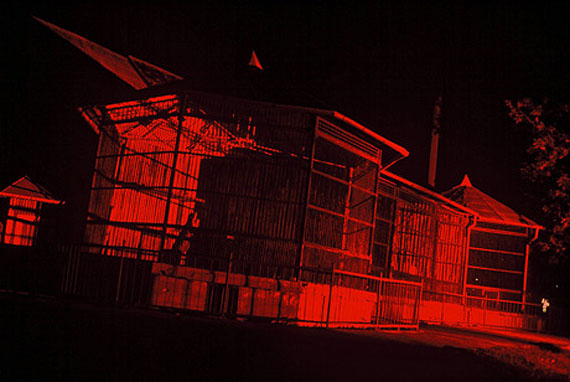
Lion cage
From the series Red Zoo. Kaliningrad, 2006
cibacrom print in edition of 5 + 1 ap. Dimensions 70 *100 cm.
©2006 Carl Michael von Hausswolff and Gallery Niklas Belenius, Stockholm.
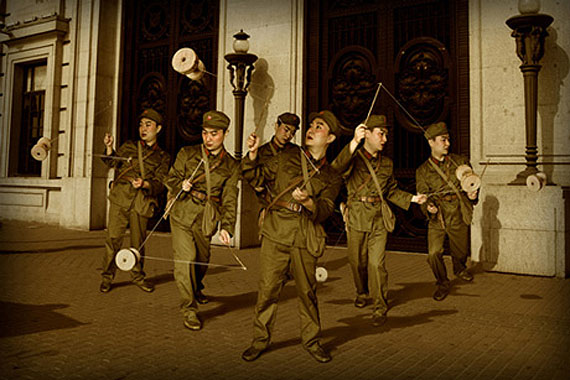
Chinese Yoyo
2007
C print, 35 x 52 in. (88.9 x 132.08 cm)
© Zhang Xianyong
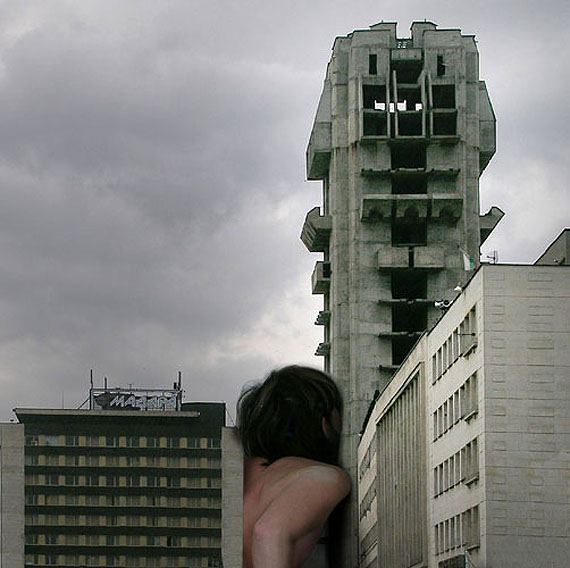
Untitled (Shumen) 2005
lambda print, 49 x 49 in. (124.46 x 124.46 cm)
© Eva Davidova